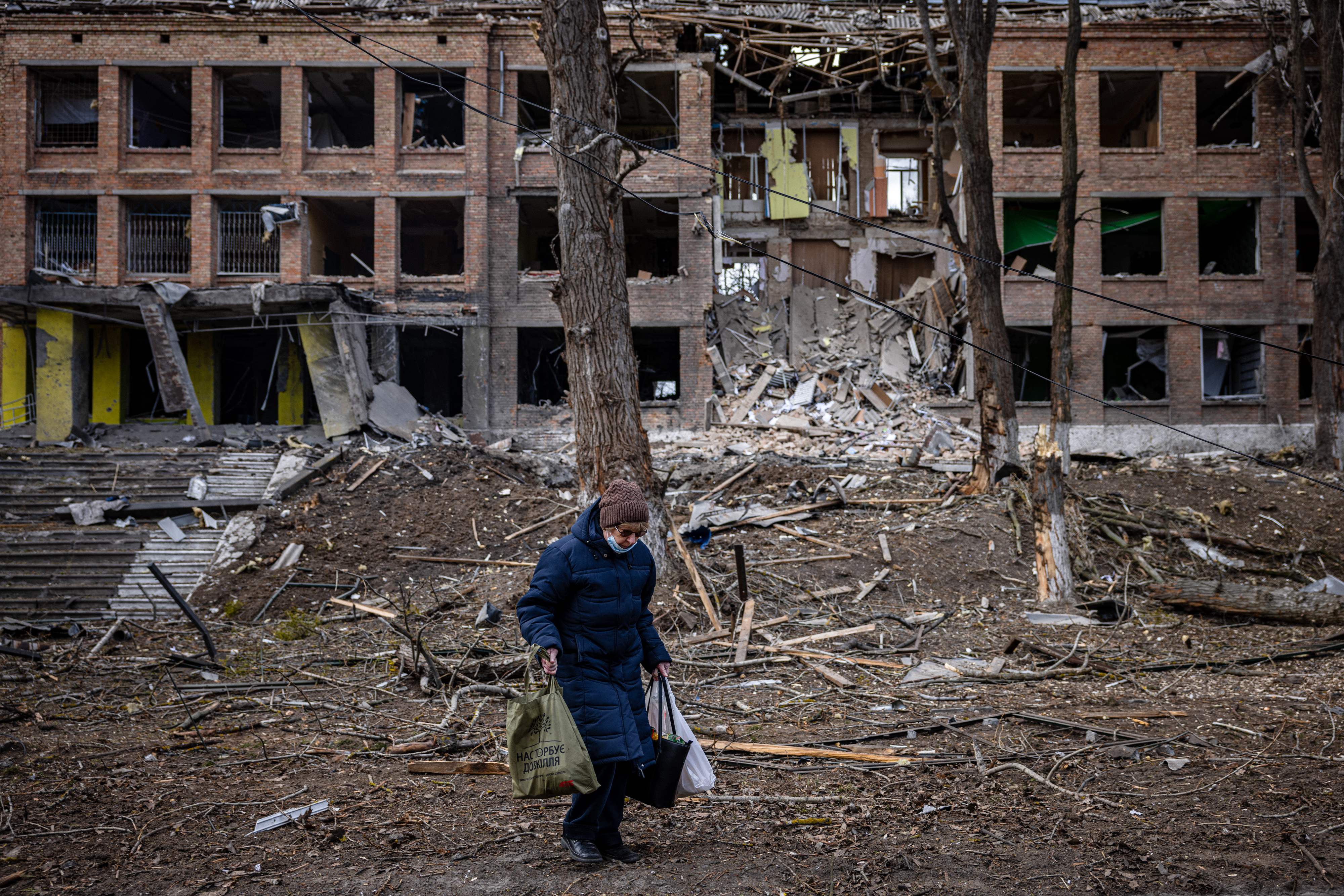Russia used vacuum bomb during invasion, Ukrainian ambassador claims
‘The devastation that Russia is trying to inflict on Ukraine is large,’ the ambassador told reporters
Your support helps us to tell the story
From reproductive rights to climate change to Big Tech, The Independent is on the ground when the story is developing. Whether it's investigating the financials of Elon Musk's pro-Trump PAC or producing our latest documentary, 'The A Word', which shines a light on the American women fighting for reproductive rights, we know how important it is to parse out the facts from the messaging.
At such a critical moment in US history, we need reporters on the ground. Your donation allows us to keep sending journalists to speak to both sides of the story.
The Independent is trusted by Americans across the entire political spectrum. And unlike many other quality news outlets, we choose not to lock Americans out of our reporting and analysis with paywalls. We believe quality journalism should be available to everyone, paid for by those who can afford it.
Your support makes all the difference.Russia used a vacuum bomb on the fifth day of its invasion of Ukraine, it has been claimed.
The bomb, also known as a thermobaric weapon or aerosol bomb, draws oxygen from the atmosphere to create a bigger and more devastating explosion.
The claim was made by Oksana Markarova – the Ukrainian ambassador to the US – who was approached by reporters after a meeting with White House lawmakers in which aid for Ukraine was discussed.
She did not reveal where the vacuum bomb was unleashed.
Ms Markarova told reporters: “They used the vacuum bomb today, which is actually prohibited by the Geneva convention.
“The devastation that Russia is trying to inflict on Ukraine is large.
“But Ukrainians will resist, we are defending our home, we do not have any other option.
“We will not get tired, we will not stop, we will not surrender.”
![Oksana Markarova meets Senate Ukraine Caucus co-chairs Dick Durbin [L] and Rob Portman](https://static.the-independent.com/2022/03/01/00/newFile-1.jpg)
Ms Markarova insisted that the US and Ukraine have been “on the same page” over the “fight for freedom and democracy against an autocratic regime”.
She said that “Russia is acting like Nazi Germany in World War Two” in killing innocent civilians by firing weapons in residential areas, orphanages, and schools.
Ms Markarova added: “They have to pay the price, they have to be isolated, they have to understand that it’s not okay in the 21st century to start war and kill people in the neighbouring sovereign country.”

Earlier, it was reported that there was evidence of the presence of TOS-1 rocket launchers capable of firing thermobaric weapons among Russian troops.
The availability of the TOS-1 to Russian forces gives rise to “considerable concern”, said one Western official.
The official added: “Certainly, if it is used in any built-up area, there is no way you can eradicate the risk of significant civilian casualties.”
The US Central Intelligence Agency (CIA) has a study that states vacuum bombs can “obliterate” anybody “near the ignition point”.
It adds: “Those at the fringe are likely to suffer many internal, thus invisible injuries, including burst eardrums and crushed inner ear organs, severe concussions, ruptured lungs and internal organs, and possibly blindness.”
The pressure wave caused by a detonated vacuum bomb can kill by “rupturing lungs”, according to a Human Rights Watch report from 2000, citing the US Defense Intelligence Agency.
The report adds: “If the fuel deflagrates but does not detonate, victims will be severely burned and will probably also inhale the burning fuel.
“Since the most common FAE (fuel-air explosive) fuels, ethylene oxide and propylene oxide, are highly toxic, undetonated FAE should prove as lethal to personnel caught within the cloud as with most chemical agents.”
Another Defense Intelligence Agency document suggests that those hit by the pressure waves could “suffer for several seconds or minutes while they suffocate”.
Subscribe to Independent Premium to bookmark this article
Want to bookmark your favourite articles and stories to read or reference later? Start your Independent Premium subscription today.







Join our commenting forum
Join thought-provoking conversations, follow other Independent readers and see their replies
Comments